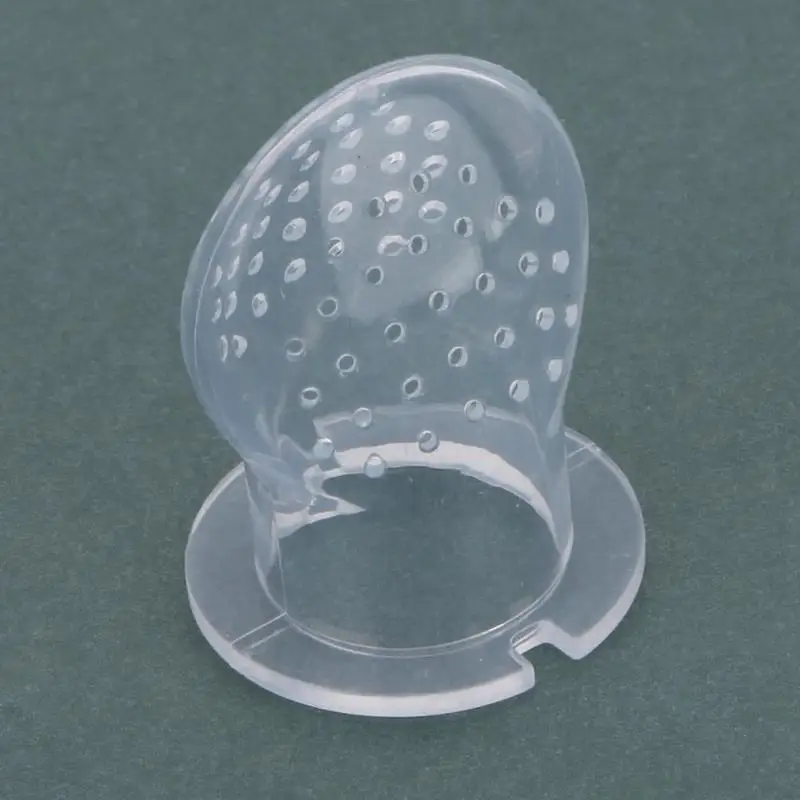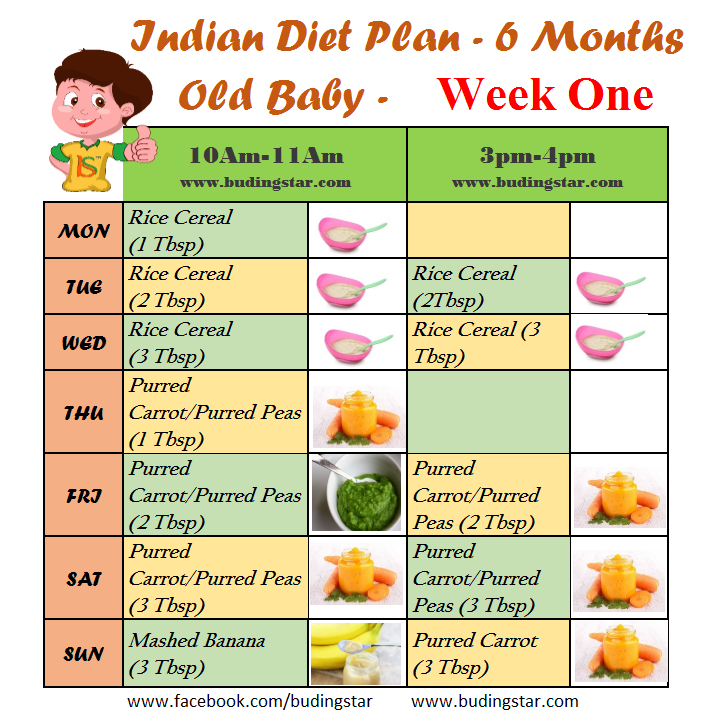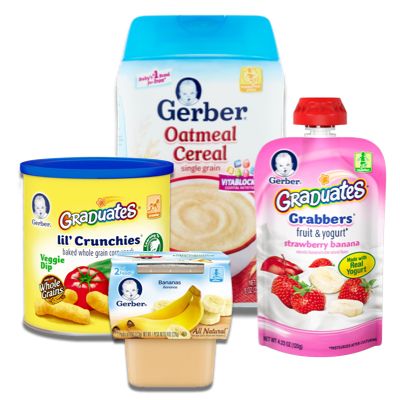How often should you feed a baby formula
Formula Feeding FAQs: How Much and How Often (for Parents)
Whether you plan to formula feed your baby from the start, want to supplement your breast milk with formula, or are switching from breast milk to formula, you probably have questions.
Here are answers to some common questions about formula feeding.
How Often Should I Feed My Baby?
Newborns and young babies should be fed whenever they seem hungry. This is called on-demand feeding.
After the first few days of life, most healthy formula-fed newborns feed about every 2–3 hours. As they get bigger and their tummies can hold more milk, they usually eat about every 3–4 hours. As babies get older, they’ll settle into a more predictable feeding routine and go longer stretches at night without needing a bottle.
Talk to your doctor if you have concerns about feeding your baby, especially if your baby is very small, is not gaining weight, or was born early (prematurely).
How Can I Tell When My Baby Is Hungry?
Signs that babies are hungry include:
- moving their heads from side to side
- opening their mouths
- sticking out their tongues
- placing their hands, fingers, and fists to their mouths
- puckering their lips as if to suck
- nuzzling again their mothers' breasts
- showing the rooting reflex (when a baby moves its mouth in the direction of something that's stroking or touching its cheek)
Babies should be fed before they get upset and cry. Crying is a late sign of hunger. But every time your baby cries is not because of hunger. Sometimes babies just need to be cuddled or changed. Or they could be sick, tired, too hot or too cold, in pain, or have colic.
How Much Should My Baby Drink?
In the first few weeks, give 2- to 3-ounce (60- to 90-milliliter) bottles to your newborn. Give more or less depending on your baby’s hunger cues.
Here's a general look at how much your baby may be eating at different ages:
- On average, a newborn drinks about 1.5–3 ounces (45–90 milliliters) every 2–3 hours. This amount increases as your baby grows and can take more at each feeding.
- At about 2 months, your baby may drink about 4–5 ounces (120–150 milliliters) every 3–4 hours.
- At 4 months, your baby may drink about 4–6 ounces (120-180 milliliters) at each feeding, depending on how often they eat.
- By 6 months, your baby may drink 6–8 ounces (180–230 milliliters) about 4–5 times a day.
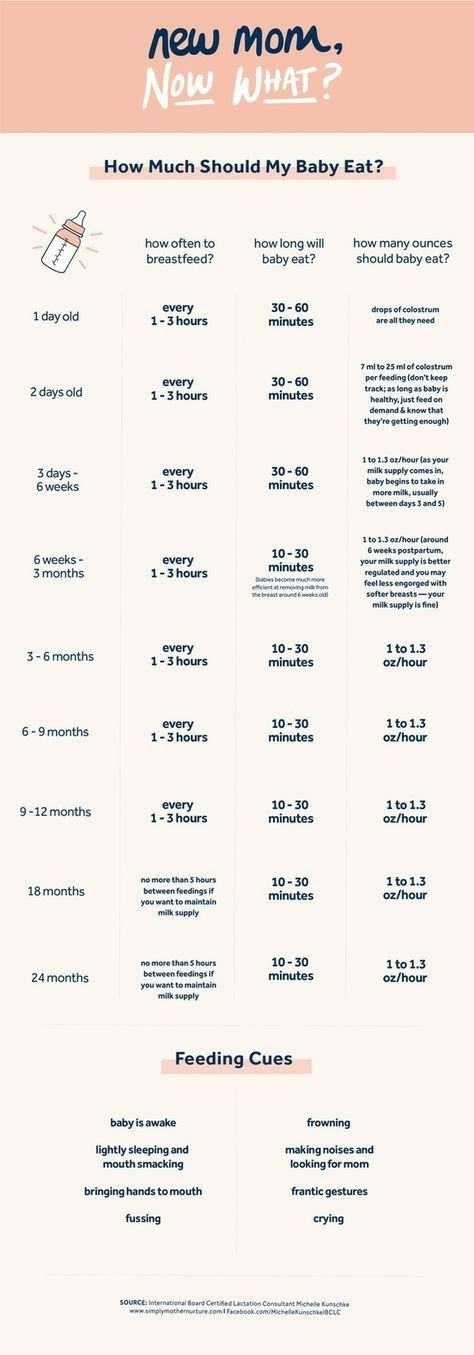
Watch for signs that your baby is hungry or full. Respond to these cues and let your baby stop when full. A baby who is full may suck with less enthusiasm, stop, or turn away from the bottle.
Why Does My Baby Seem Hungrier Than Usual?
As babies grow, they begin to eat more at each feeding and can go longer between feedings. Still, there may be times when your little one seems hungrier than usual.
Your baby may be going through a period of rapid growth (called a growth spurt). These can happen at any time, but in the early months are common at around:
- 7–14 days old
- between 3–6 weeks
- 4 months
- 6 months
During these times and whenever your baby seems especially hungry, follow their hunger cues and continue to feed on demand, increasing the amount of formula you give as needed.
Is My Baby Eating Enough?
At times, you may wonder whether your baby is getting enough nutrients for healthy growth and development. Babies who get enough to eat seem satisfied after eating and are regularly peeing and pooping.
Babies who get enough to eat seem satisfied after eating and are regularly peeing and pooping.
At your baby’s checkups, the doctor will review your baby’s growth chart, track your little one’s development, and answer any questions. Talk to your doctor if you have any concerns about your baby’s feeding and nutrition.
Reviewed by: Mary L. Gavin, MD
Date reviewed: November 2021
Burping Your Baby (for Parents)
Reviewed by: Madhu Desiraju, MD
Primary Care Pediatrics at Nemours Children's Health
en español Hacer eructar a su bebé
An important part of feeding a baby is burping. Burping helps to get rid of some of the air that babies tend to swallow during feeding. Not being burped often and swallowing too much air can make a baby spit up, or seem cranky or gassy.
How to Burp Your Baby
When burping your baby, repeated gentle patting on your baby's back should do the trick. Cup your hand while patting — this is gentler on the baby than a flat palm.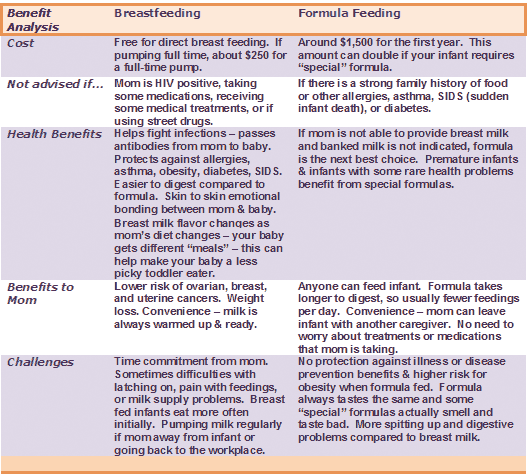
To prevent messy cleanups when your baby spits up or has a "wet burp," you might want to place a towel or bib under your baby's chin or on your shoulder.
Try different positions for burping that are comfortable for you and your baby. Many parents use one of these three methods:
- Sit upright and hold your baby against your chest. Your baby's chin should rest on your shoulder as you support the baby with one hand. With the other hand, gently pat your baby's back. Sitting in a rocking chair and gently rocking with your baby while you do this may also help.
- Hold your baby sitting up, in your lap or across your knee. Support your baby's chest and head with one hand by cradling your baby's chin in the palm of your hand. Rest the heel of your hand on your baby's chest, but be careful to grip your baby's chin, not the throat. Use the other hand to pat your baby's back.
- Lay your baby on your lap on his or her belly.
 Support your baby's head and make sure it's higher than their chest. Gently pat your baby's back.
Support your baby's head and make sure it's higher than their chest. Gently pat your baby's back.
If your baby seems fussy while feeding, stop the session, burp your baby, and then begin feeding again. Try burping your baby every 2 to 3 ounces (60 to 90 milliliters) if you bottle-feed and each time you switch breasts if you breastfeed.
Try burping your baby every ounce during bottle-feeding or every 5 minutes during breastfeeding if your baby:
- tends to be gassy
- spits a lot
- has gastroesophageal reflux (GER)
- seems fussy during feeding
If your baby doesn't burp after a few minutes, change the baby's position and try burping for another few minutes before feeding again. Always burp your baby when feeding time is over.
To help prevent the milk from coming back up, keep your baby upright after feeding for 10 to 15 minutes, or longer if your baby spits up or has GERD. But don't worry if your baby spits sometimes.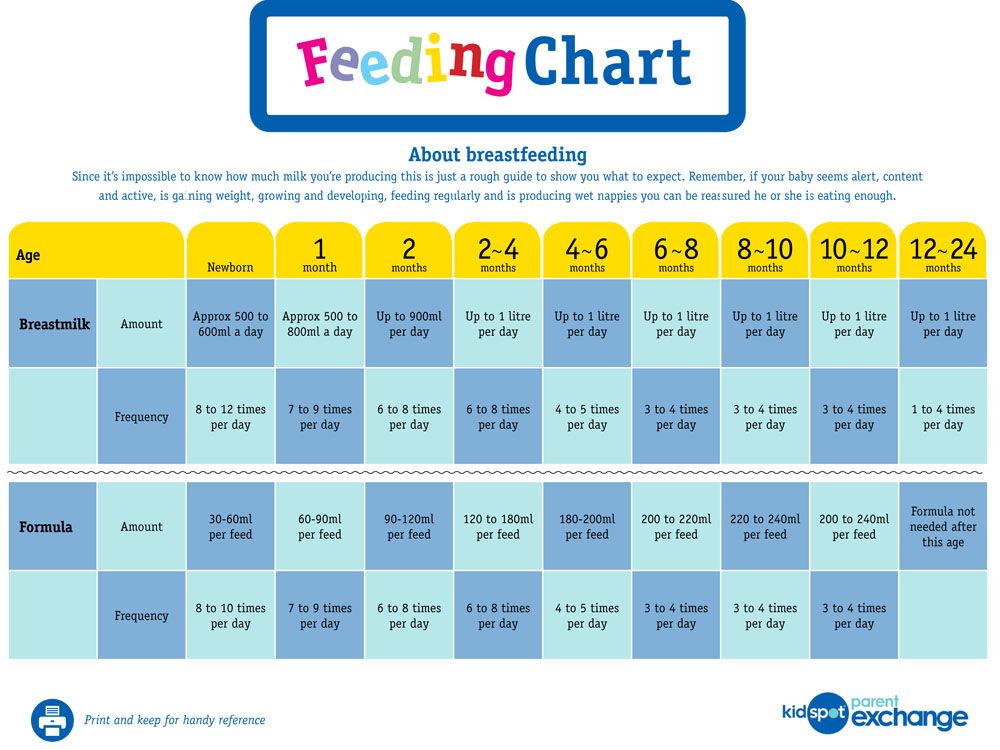 It's probably more unpleasant for you than it is for your baby.
It's probably more unpleasant for you than it is for your baby.
Sometimes your baby may awaken because of gas. Picking your little one up to burp might put them back to sleep. As your baby gets older, don't worry if your child doesn't burp during or after every feeding. Usually, it means that your baby has learned to eat without swallowing too much air.
Babies with colic (3 or more hours a day of continued crying) might have gas from swallowing too much air during crying spells, which can make the baby even more uncomfortable. Check with your pediatrician before giving your baby anti-gas drops.
Reviewed by: Madhu Desiraju, MD
Date reviewed: June 2022
Feeding baby formula
All parents dream that their child grows and develops correctly and harmoniously. However, the formation of a child's body largely depends on balanced nutrition that the baby receives from the first days of life.
Dry milk drink "Baby milk" Valio Baby 3 NutriValio for feeding children over 12 months Read more
Of course, the best food for a baby is mother's milk, because it gives the child a lot of useful and necessary substances for growth and development.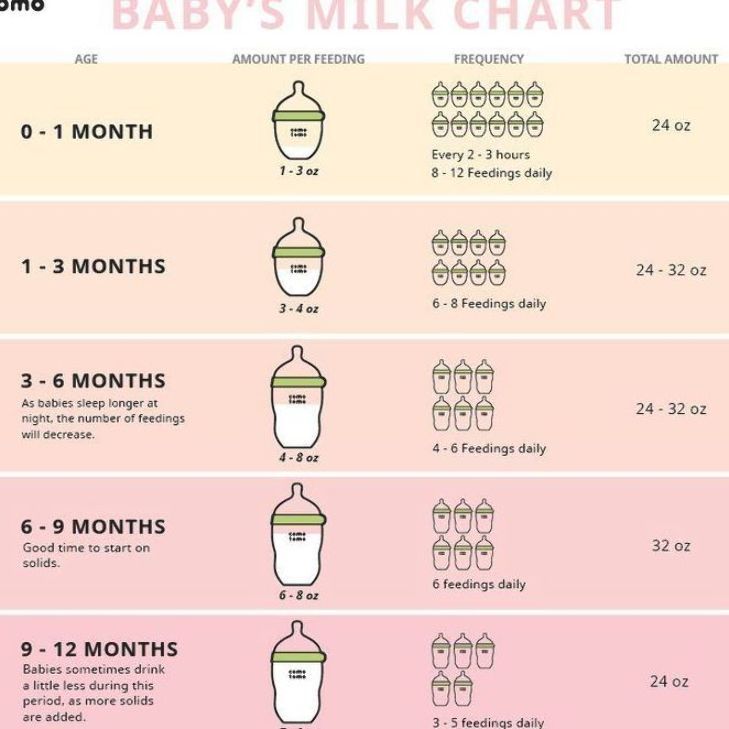 The quality of a child's nutrition in early childhood largely determines the state of his health in adulthood. In addition, nutrition is important in the development of the child's central nervous system and affects his intelligence and abilities.
The quality of a child's nutrition in early childhood largely determines the state of his health in adulthood. In addition, nutrition is important in the development of the child's central nervous system and affects his intelligence and abilities.
If the child is artificially fed, it is all the more important to consciously approach the issue of his nutrition, carefully choosing the right mixture. Carefully monitor the feeding regime and introduce complementary foods in a timely manner. It is in the power of parents to provide the baby with health for many years.
#PROMO_BLOCK#
It is important to follow a few rules, always remembering that when choosing a diet, consultation with a doctor is required!
1. Give preference only to adapted mixtures, since in their composition they are as close as possible to the composition of breast milk.
2. Take into account the individual characteristics of the body and the state of health of the baby.
3. Take into account the age of the child and select mixtures of the appropriate stage - initial and subsequent. To make it easier for parents to navigate, the formulas are labeled with numbers: 1 (0–6 months), 2 (6–12 months), 3 (from 12 months). The initial (starter) mixture is indicated by the number 1 and is intended for children in the first six months of life. Subsequent formulas have the numbers 2 and 3 on the packaging. They are intended for older babies from 6 months. It is important to remember that in mixtures for each stage, the composition formula changes, taking into account the age-related characteristics of development and the needs of children.
4. Observe the dosage in accordance with the instructions on the packaging. Deviation from these norms can adversely affect the well-being and health of the child. If you take too much dry matter, the mixture will come out with an increased content of nutrients, which can lead to more frequent regurgitation, unstable stools and excessive stress on the kidneys and intestines.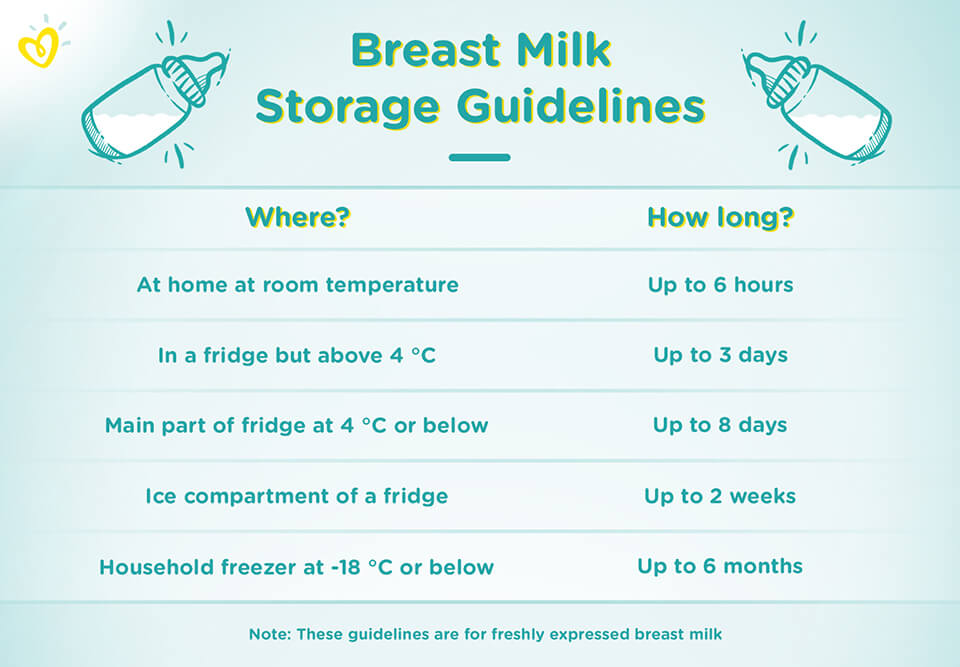 If you take the powder less than the specified norm, then the mixture will turn out to be low-calorie and insufficiently nutritious - the baby will remain hungry.
If you take the powder less than the specified norm, then the mixture will turn out to be low-calorie and insufficiently nutritious - the baby will remain hungry.
5. Use specially prepared water to dilute the mixture. Only clean and boiled water should be used.
With artificial feeding, it is impossible to abruptly transfer the baby to a qualitatively new food and without the need to change the mixture. It is very important to properly control the amount of feeding. For each age, the daily volume is calculated, which is divided by the number of doses. This is done so that the actual volumes eaten by the baby do not exceed the calculated recommended norms. To calculate the amount of feeding for the baby yourself, you should rely on the following data.
- For a child in the first days of life, the volume of feedings (day and night) per day should be 1/5 of the child's body weight. Approximately 600-900
- In the first 2 months, the volume of feeding per day should not exceed 1/5-1/6 of the child's body weight.
 For example, if a child weighs 4 kilograms, then he should eat no more than 800 g of the mixture per day.
For example, if a child weighs 4 kilograms, then he should eat no more than 800 g of the mixture per day. - For a 2-4 month old baby, the daily formula is 1/6 of body weight (800-1000 g)
- For a 4-6 month old baby, the maximum daily amount of formula should be 1/7 of body weight (900-1000 g).
- After six months and up to 9 months, the baby should eat within the daily volume of the mixture not exceeding 1/8 of his body weight (1000-1100 g).
- At the age of 9–12 months, the daily volume of milk formula is already 1/9 of the child's body weight (1100–1200 g).
To calculate the volume of each feeding, it is necessary to divide the calculated daily volume of milk formula by the optimal number of feedings. With artificial feeding of children in the first months of life, as a rule, 6-7 meals a day are recommended after 3 or 3.5 hours with a 6.5 or 6-hour break.
0-2 months - 7-10 feedings per day
2-4 months - 6-7 feedings per day
4-6 months - 5-6 feedings per day
6-12 months - 4-5 feedings per day
If a child has at least some deviations in development, a lag in weight gain, then you should definitely consult with a pediatrician to draw up a baby nutrition plan!
Most doctors and infant nutritionists agree that “free” (on demand) feeding is optimal for a baby.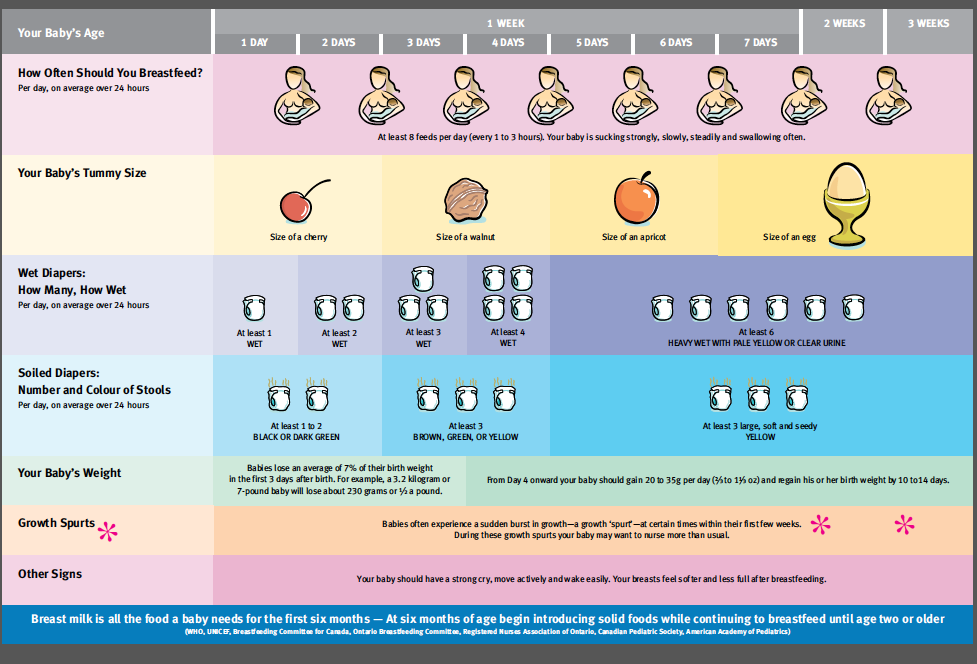 To meet the needs of the child, it is important for parents to listen to the child. However, when a child is bottle-fed, you should pay attention to some nuances. Already in the first days of life, babies show their individual character - one eats in moderation, the other can overeat. Therefore, when feeding with milk formulas, it is recommended to stick to the golden mean and choose a partially limited "free mode", when there are no restrictions on the time and frequency of feeding, but the volume of the mixture eaten is controlled.
To meet the needs of the child, it is important for parents to listen to the child. However, when a child is bottle-fed, you should pay attention to some nuances. Already in the first days of life, babies show their individual character - one eats in moderation, the other can overeat. Therefore, when feeding with milk formulas, it is recommended to stick to the golden mean and choose a partially limited "free mode", when there are no restrictions on the time and frequency of feeding, but the volume of the mixture eaten is controlled.
From the first days of the transition to artificial feeding, it is important to carefully monitor the reactions of the baby and record them. The best option is to keep a child's food diary, where you need to write down all the nuances associated with feeding: time, amount of food, baby's reactions after feeding. If necessary, such a diary will help you and your baby's pediatrician adjust the schedule and volume of feedings, as well as understand the possible causes of problems with nutrition and growth.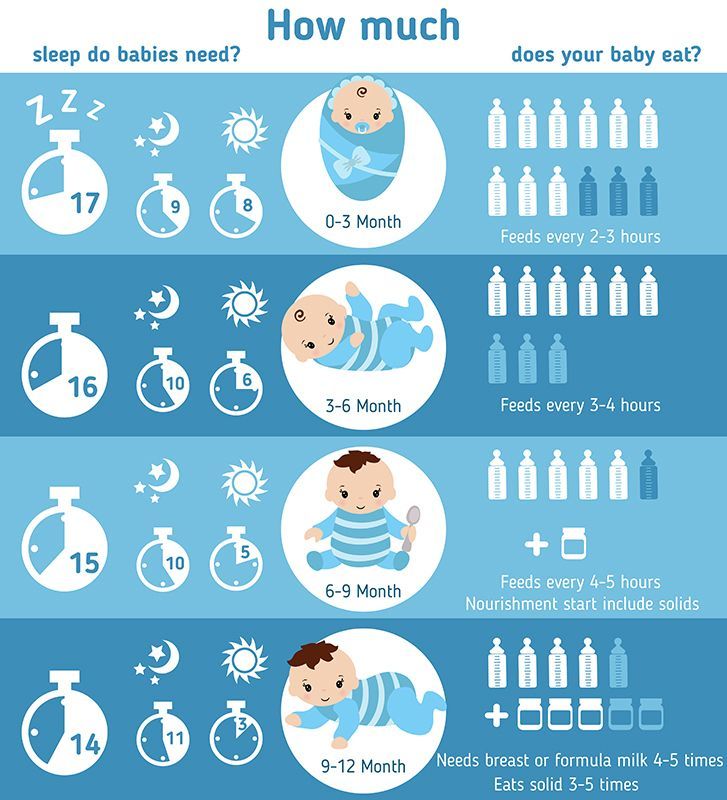
After a year, the time comes to transfer the child to a diet that is closest to what is eaten in the family. And then the question arises of when to give up formula milk. If up to a year a child is breastfed or artificially fed and does not particularly need regular milk, then after a year it becomes an important source of nutrients: calcium, phosphorus, vitamins, proteins, fats and carbohydrates. But even the best cow's milk in its original form is not suitable for feeding young children. Why?
It's all about the large amount of casein - a protein that is difficult to digest and thereby increases the load on the child's digestive systems, which do not produce enough hydrochloric acid and enzymes to digest casein.
The ideal option for children from one year old is special baby milk or a milk drink that will provide the child's body with all the necessary nutrients, helping to occur a natural transition and adaptation to the next, adult, stage of nutrition.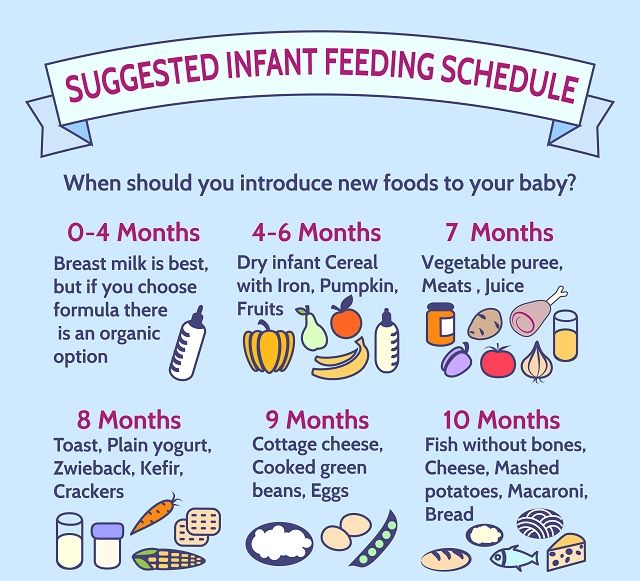 Valio specialists have developed a special baby milk Valio Baby 3, which can be used with mixed and artificial feeding. It is ideal for children from one year old, who become more mobile and active every day. You can also learn more about the correct complementary foods menu in our blog.
Valio specialists have developed a special baby milk Valio Baby 3, which can be used with mixed and artificial feeding. It is ideal for children from one year old, who become more mobile and active every day. You can also learn more about the correct complementary foods menu in our blog.
5 1
FoodShare:
Author: Reetta Tikanmäki
Palm oil in baby food
Infant milk formulas are made from cow's milk. However, in terms of fat composition, it differs significantly from that of the mother.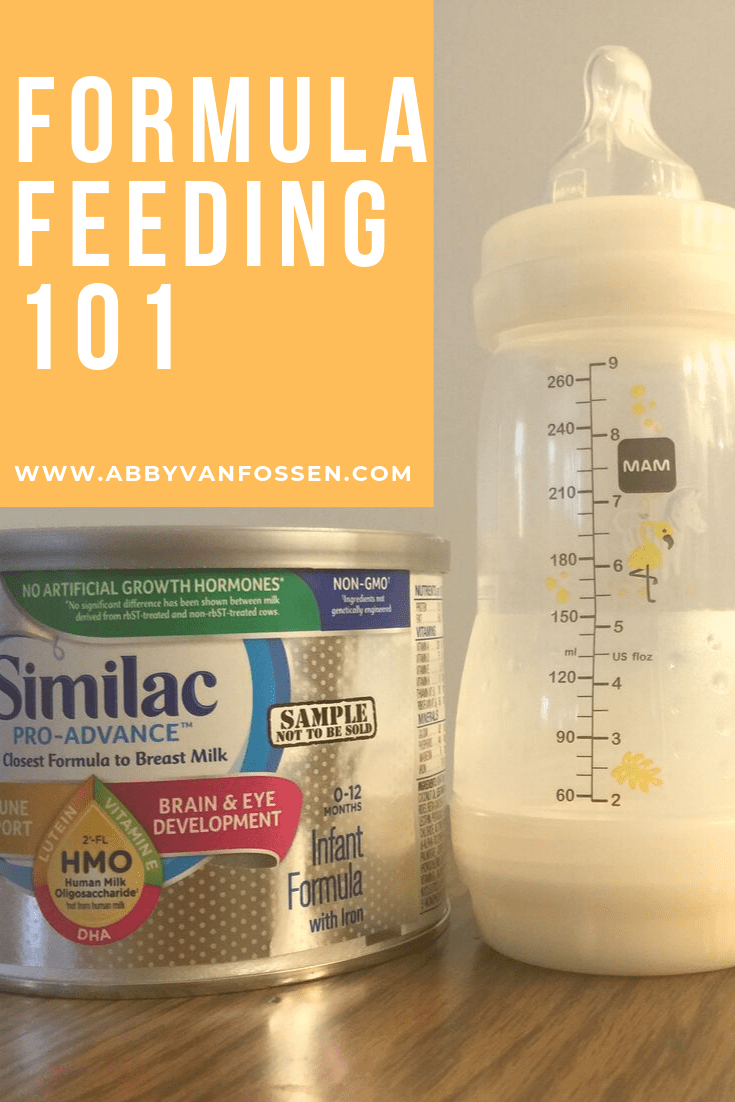
Read
Author: Ivargizova Oksana
How to choose milk formula for a baby
Breast milk is the best food for a newborn baby. It contains all the necessary nutritional components that fully meet the needs of the child and are necessary for his healthy and harmonious development.
Read
Show all
Feeding on demand or by the hour? What to do if the baby is bottle-fed
It would seem that strictly hourly feeding is a thing of the past, and we hear from everywhere that a newborn needs to be fed on demand. But this applies to breastfeeding, and in the case of artificial, everything is not so simple. How to feed an artificial baby and what is important to remember when choosing a mixture - in the material "Daily Baby".
Feeding: on demand or by the clock?
In Soviet times, it was recommended to feed a newborn on any type of feeding strictly by the hour.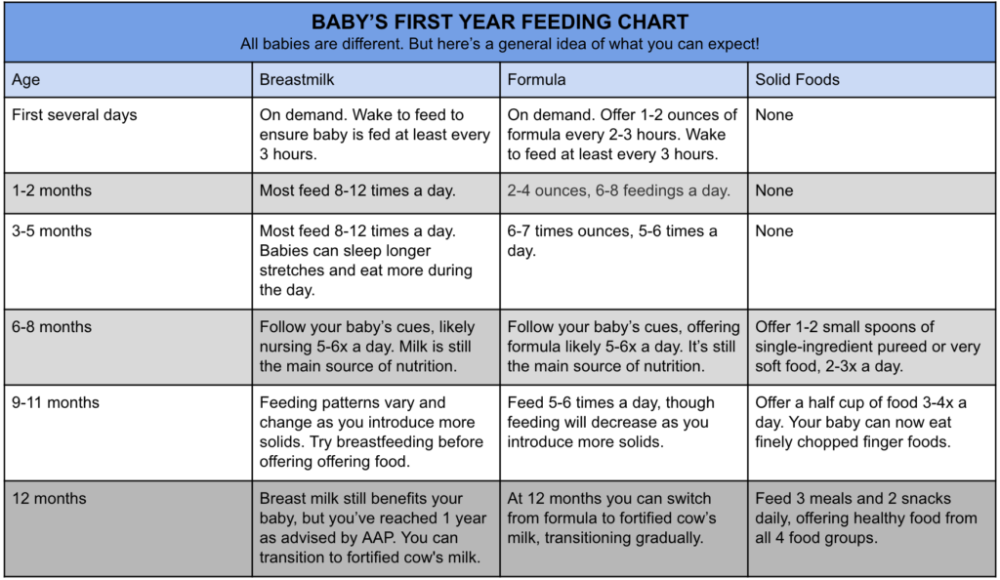 There was no question of any wards of joint stay with the baby.
There was no question of any wards of joint stay with the baby.
Times have changed, and today doctors are unanimous on this issue: it is more expedient to feed a baby "on the breast" on demand and apply it at his slightest request. But what are the norms for feeding an artificial child? Is it right to give the baby a mixture “on demand” or in this case, do you still need a diet?
Doctors recommend following a certain regimen when feeding a child with artificial formula. Feeding a newborn "on demand" on an artificial form of feeding is almost impossible, because, firstly, it is not always convenient to quickly and at the first request of the child to prepare the mixture.
And secondly, when feeding on demand, it is difficult to track the amount of food received by the baby. And if it’s impossible to overfeed with a breast, then with a mixture it’s completely. Modern artificial mixtures, although they contain a lot of nutrients, but, whatever one may say, breast milk is easier and easier to digest. Therefore, when feeding with a mixture, the regimen is so important. Doctors insist: you need to feed the newborn with a mixture not at the request of the baby, but strictly on time.
Therefore, when feeding with a mixture, the regimen is so important. Doctors insist: you need to feed the newborn with a mixture not at the request of the baby, but strictly on time.
Hourly formula feeding is also important because this type of feeding is an acute issue of hygiene. Bottles and nipples must be perfectly clean, and the mixture must be freshly prepared.
You also need to remember that the stool of a bottle-fed baby should be daily. Due to the fact that the formula is absorbed and digested longer, the frequency of meals should be lower than when breastfeeding. Otherwise, there is a risk of overfeeding the child, and there are not far from problems with the gastrointestinal tract and obesity. There is also the possibility of underfeeding, which is why nutritional order is so important.
Artificial feeding: how to properly feed
There is no single and clear schedule for feeding an artificial newborn. It is necessary to focus on a specific baby and adjust the nutrition plan for him.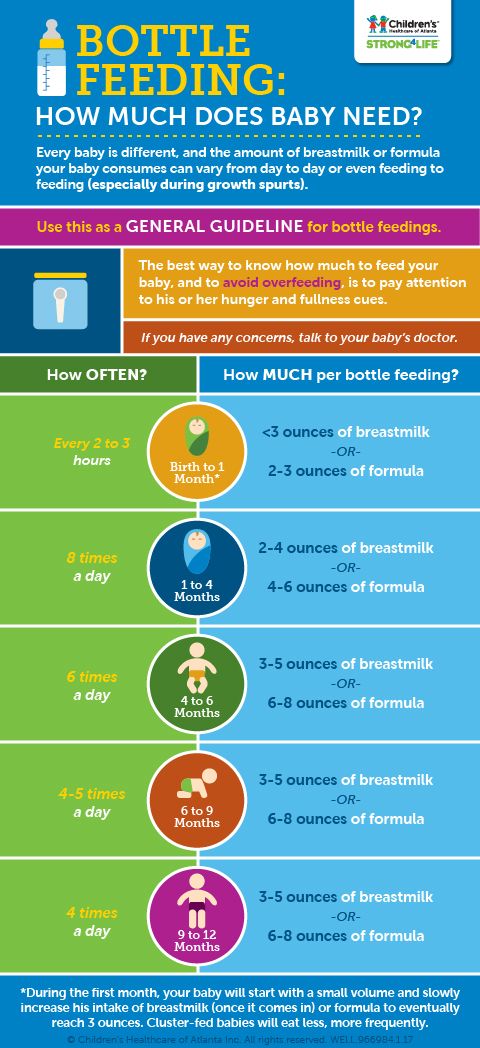 The optimal intervals between feedings and the volume of the mixture eaten must be selected individually. Parents should be patient and gradually accustom the child to the regime that suits him.
The optimal intervals between feedings and the volume of the mixture eaten must be selected individually. Parents should be patient and gradually accustom the child to the regime that suits him.
It is recommended to take notes while observing the behavior and well-being of the child. So you can adjust the daily routine, making it the most comfortable for the baby. At the same time, small deviations from the regime, in half an hour or an hour, are quite acceptable.
Artificial babies of the first month of life are fed about six to seven times a day, the interval between feedings is about three and a half hours. At night, it is desirable to withstand six hours without feeding. Haphazard or more frequent meals can cause indigestion, as well as the appearance of increased gas production in the baby, colic and frequent spitting up.
With age, the hours of feeding a newborn formula change: the intervals between meals increase. A six-month-old child is given a mixture about five times a day. From the age of 7 months, the baby is fed with a mixture approximately every 5 hours, taking into account the fact that at this age the baby is actively eating complementary foods.
From the age of 7 months, the baby is fed with a mixture approximately every 5 hours, taking into account the fact that at this age the baby is actively eating complementary foods.
“Children of the first year of life, especially the first half of the year, grow and develop very actively, and this requires a regular supply of nutrients. Formula-fed infants are usually fed once every 2-3 hours.
It is very important to calculate the child's daily energy requirement. For full-term healthy babies up to 6 months, this is 115 kcal per kilogram of weight. But children are also very large. There is an upper limit of the daily volume of the mixture: for three months it is 850 ml, for 5 months and above - no more than 1000 milliliters of the mixture per day.
Unlike breastfeeding, the daily amount of formula must be controlled, because obesity and overfeeding during artificial feeding are more dangerous.
Children with a good appetite, who are already low on the maximum daily volume, after 4 months can be introduced complementary foods, but do not increase the mixture.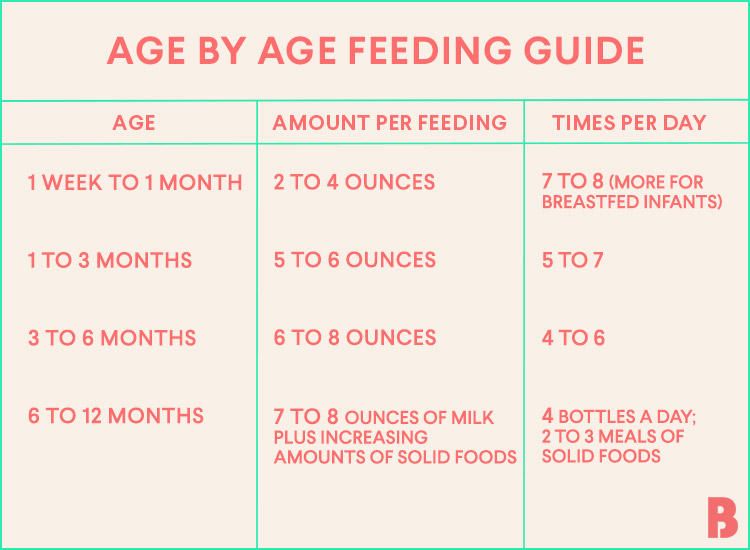
Bottle-fed water can be offered to children, but it is not necessary, at the request of the child. Again, the daily volume of water is important - no more than the volume of one feeding.
I would also add that formula-fed on-demand feeding is not recommended, since formulas, even the highest quality ones, do not have such good digestibility as human milk. And the risk of overfeeding is high,” says pediatrician Anna Ganina .
Pay attention to the stool of a bottle-fed newborn. The appearance of mucus in it, a strong liquefaction of the stool, or, conversely, constipation may warn that the mixture is not suitable for the baby.
However, it is important to remember that you should not change baby food too often and unreasonably. It is better if the child eats one, suitable for him, high-quality and healthy mixture.
If you follow all the rules of feeding, the growth and development of the baby on artificial feeding will proceed in accordance with the norms.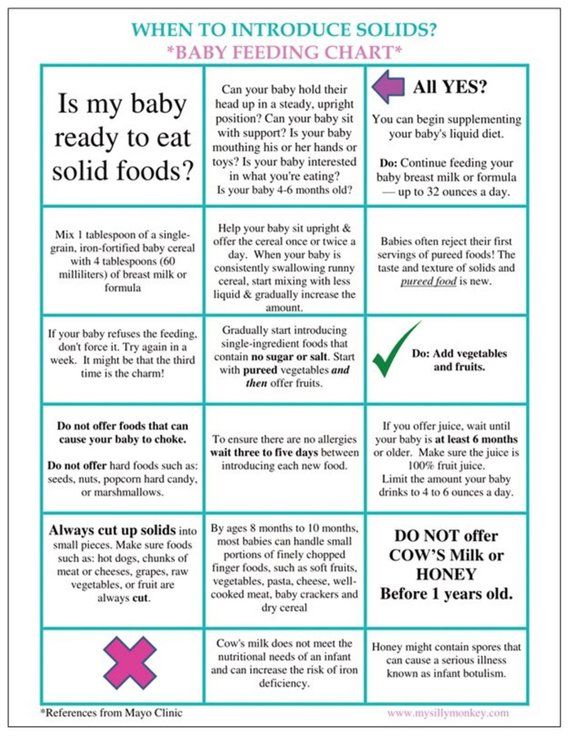
Kabrita Gentle Nutrition based on goat milk
Kabrita infant formula based on goat milk has an adapted protein composition. Goat's milk is closer in composition to breast than cow's, it is digested faster and easier than cow's milk, so feeding a newborn with goat's milk formula is preferable. Such food is faster digested, better absorbed and reduces discomfort when switching from breastfeeding to artificial or mixed.
Kabrita baby food is a state-of-the-art formula based on natural Dutch goat's milk.
Kabrita formulas contain the unique Digest X fat complex that mimics the fat profile of breast milk. The mixtures are enriched with goat milk whey, which is rich in polyunsaturated fatty acids. Goat milk whey is highly digestible and digestible. All this helps to avoid constipation, increases energy metabolism and promotes better absorption of calcium in the child's body. Goat milk is ideal for natural easy digestion.
— share with your friends!
Experts: Anna Ganina
Read more
- It's not that simple, or Why formula feeding should be done wisely
- Newborn baby care and first week at home.


